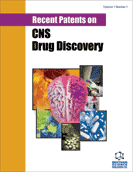Abstract
The market for pain treatment is a major segment of nervous system pathologies. Despite this dynamism, the management of some pain conditions remains a clinical challenge. Neuropathic pain arises as a direct consequence of a lesion or disease affecting the somatosensory system. It is generally a chronic and disabling condition which is difficult to treat. Antidepressant drugs are recommended as one of the first line treatments, but they display noticeable side effects and are not effective on all patients. Using a murine model of neuropathy, we demonstrated that the stimulation of β2- adrenergic receptors (β2-AR) is not only necessary for antidepressant drugs to exert their antiallodynic action but that it is in fact sufficient to alleviate neuropathic allodynia. Chronic, but not acute, treatment with β-mimetics such as terbutaline, salbutamol, fenoterol, salmeterol, ritodrine, isoprenaline (isoproterenol), metaproterenol (orciprenaline), procaterol, formoterol, clenbuterol or bambuterol, relieves allodynia. Agonists of β2-ARs, and more generally any molecule stimulating β2-ARs such as β-mimetics, are thus proposed as potential new treatments for neuropathic pain. Clinical studies are now in preparation to confirm this potential in patients with neuropathic pain. This article reviews the findings leading to propose β-mimetics for neuropathic pain treatment and other recent patents on the topic.
Keywords: Neuropathy, pain, antidepressant, nortriptyline, β-mimetic, β2-adrenergic receptor, adrenoceptor, allodynia, treatment, terbutaline, salbutamol
 8
8





















